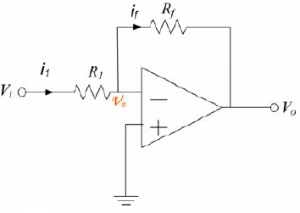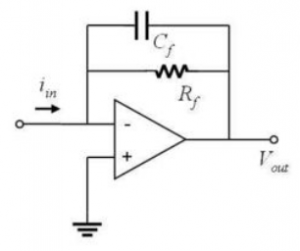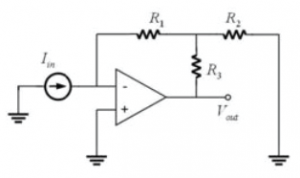Assignment 7, Part 1: op amp golden rules questions
This is Part 1 of Assignment 7.
| |
your answers to the following questions |
- Op amp circuits:
-
Calculate the gain of circuit (a), Vo/Vi, in terms of the input voltage and the two resistor values.
-
In the DNA melting lab, fluorescence intensity will be determined by measuring the output current of a photodiode. Schematic (b) shows a circuit called a transimpedance amplifier that converts a current to a voltage.
Derive an expression for the output voltage of the circuit produced by a DC current input at iin (b). (At DC, you can ignore the effect of the capacitor.) Express your answer in the form of a transfer function, Vout/iin. - What is the high frequency gain of the transimpedance amplifier? Remember that a capacitor acts like an open circuit at low frequencies and a short circuit at high frequencies.
- A transimpedance amplifier with a gain of approximately 108 V/A will be required for the DNA melting lab. What value of resistor in the above circuit would achieve this gain?
-
It is undesirable to use the large value of resistor you computed in part A.4. Shown in (c) is another possible implementation of the transimpedance amplifier. Derive an expression for the output voltage of this circuit in terms of the input current and the three resistor values.
- In part A.3., you determined the effect of putting a capacitor across the feedback resistor in a transimpedance amplifier. High gain amplifiers are susceptible to noise coupling from a variety of sources. Since high frequencies are not of interest in the DNA melting lab, it is beneficial to insert a capacitor to reduce the noise. In the above circuit, where would you connect the capacitor and how would you choose its size?
- Now write down the expression for this new circuit's output with respect to the current input for AC signals.
-
Back to Assignment 7.
</div>


